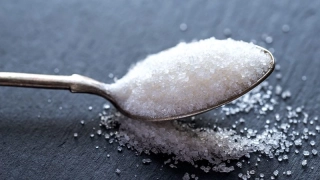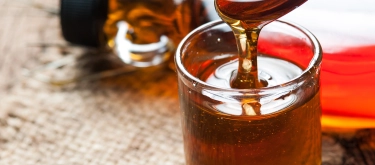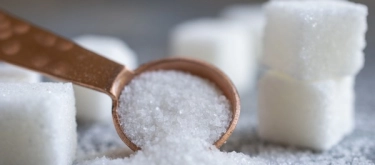Sorbitol (E420): Taste Profile, Aroma, Benefits and Health Risks
Sorbitol (E420) is a sugar alcohol naturally found in many fruits and widely used in the food industry as a sweetener, humectant, and texturizer. It provides sweetness with fewer calories than sugar and is valued for its ability to retain moisture and improve the shelf life of a variety of foods.
Sorbitol is generally safe for most people, including those with diabetes, but excessive consumption may cause digestive discomfort or laxative effects. It is considered non-allergenic.
What does Sorbitol (E420) taste like?
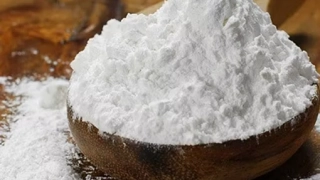
Complete Sensory Description:
-
Taste: Sorbitol has a mild, clean sweetness, roughly 60% as sweet as sucrose, with a cool, slightly refreshing aftertaste and no bitterness.
-
Aroma: Pure sorbitol is odorless, and does not influence the aroma of finished foods.
-
Texture: As a powder or syrup, sorbitol imparts a smooth, pleasant mouthfeel and helps retain softness in confections, baked goods, and chewing gum.
-
Appearance: It is a white, crystalline powder or a clear, viscous syrup in pure form. In food products, sorbitol is invisible.
In-depth Flavor Analysis:
On a molecular level, sorbitol is a polyol, providing sweetness and a cooling effect when dissolved in the mouth. It interacts with water to create moist, tender textures and slows staling in baked goods. Sorbitol’s lower sweetness makes it suitable for diabetic and reduced-calorie products, allowing fine control over flavor and mouthfeel. It does not caramelize or brown like sugar, which can affect the sensory properties of certain baked items.
Varieties and Culinary Applications:
Sorbitol is used in sugar-free candies, chewing gum, chocolate, baked goods, ice creams, jams, and pharmaceuticals. It serves as a bulking agent and moisture retainer, especially in sugar-free and diabetic-friendly products. Sorbitol syrup is also common in processed foods for its humectant and texture-improving properties.
Selection and Storage:
Food-grade sorbitol is available as powder or syrup, packaged in airtight containers. Store in a cool, dry place to avoid clumping or crystallization. Properly stored, it remains stable and effective for a long period.
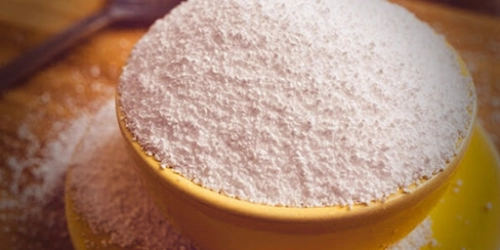
Nutritional Insights:
Sorbitol provides about 2.6 kcal per gram (less than sucrose) and does not cause rapid spikes in blood glucose, making it suitable for diabetic diets. It is partially absorbed and metabolized slowly by the body. Excessive consumption may cause digestive discomfort or have a mild laxative effect.
Expert Insights & Culinary Tips:
Food technologists use sorbitol to keep baked goods moist and soft, and as a sweetener in sugar-free and reduced-calorie recipes. It is popular in pharmaceuticals to improve texture and taste of tablets and syrups.
Interesting and Curious Facts:
Sorbitol was first discovered in rowan berries (Sorbus aucuparia), from which its name is derived. It is now produced commercially from glucose via hydrogenation.
Harm and Dietary Considerations:
Sorbitol is safe for most people in moderation. Large amounts (over 20 grams per day in adults) may cause bloating or a laxative effect. Sensitive individuals or children may experience symptoms at lower doses. No allergenic or toxic effects have been identified at approved levels.
Religious Dietary Considerations:
Sorbitol is plant-derived or synthetically produced and is permitted under Halal, Kosher, vegetarian, and vegan standards.
Final Thoughts & Sensory Journey:
Sorbitol (E420) delivers gentle sweetness and enduring softness to foods, making it essential in sugar-free, moist, and tender-textured products.
Resources:
-
Belitz, H.-D., Grosch, W., & Schieberle, P. (2009). Food Chemistry (4th Edition). Springer. ISBN: 978-3540699330 (E420)
-
Branen, A. L., Davidson, P. M., & Salminen, S. (2001). Food Additives (2nd Edition). Marcel Dekker. ISBN: 978-0824704382 (E420)
-
Fennema, O. R. (1996). Food Chemistry (3rd Edition). Marcel Dekker. ISBN: 978-0824793546 (E420)

